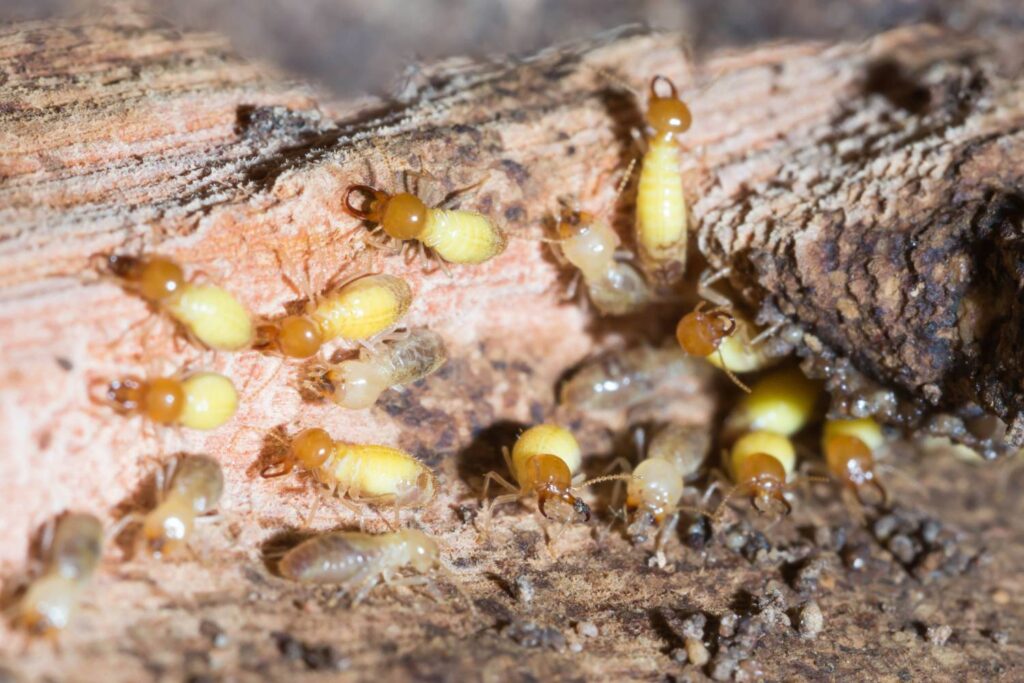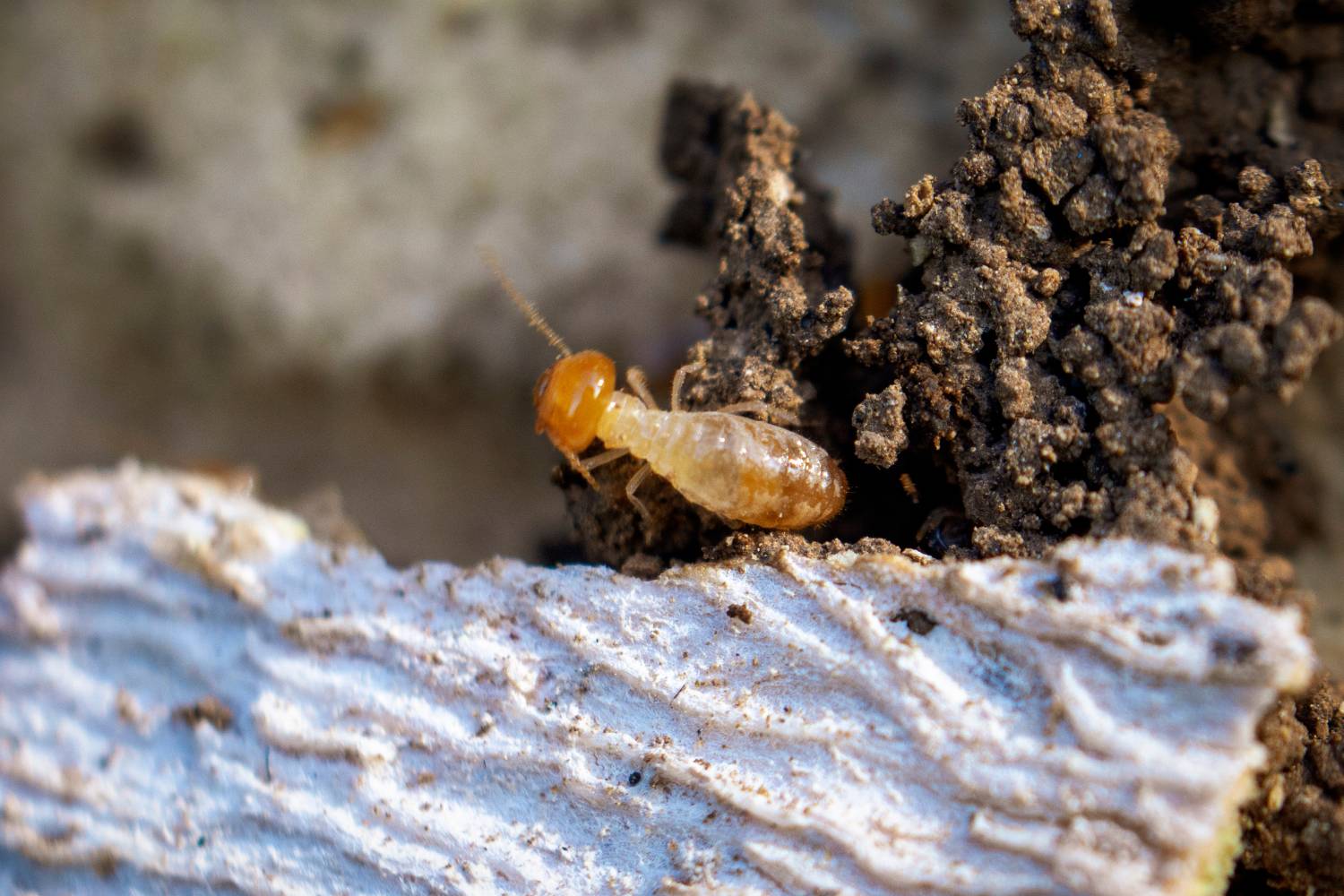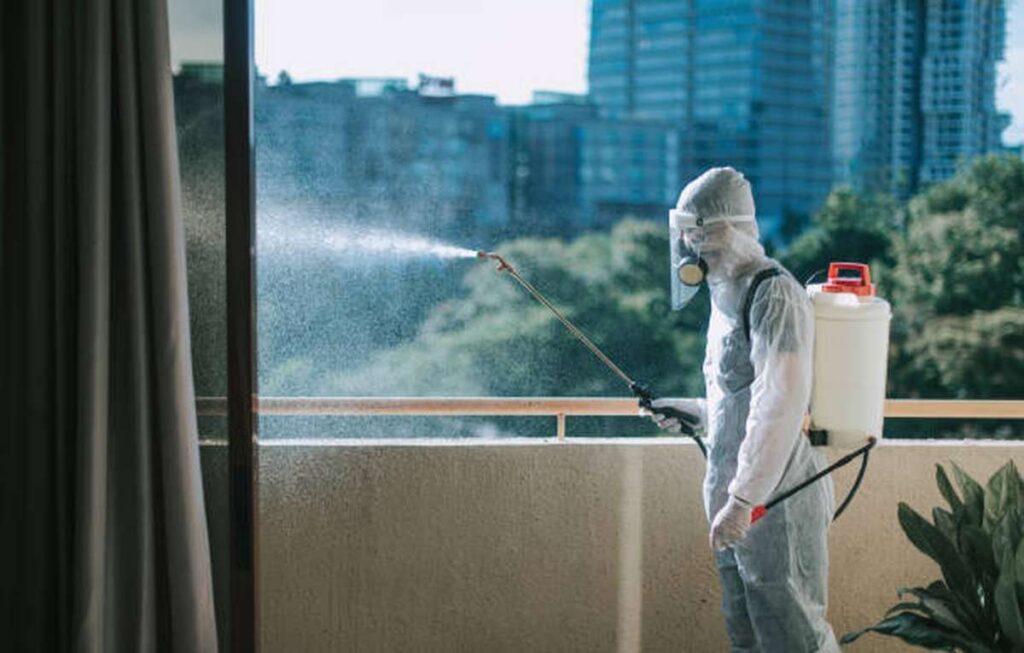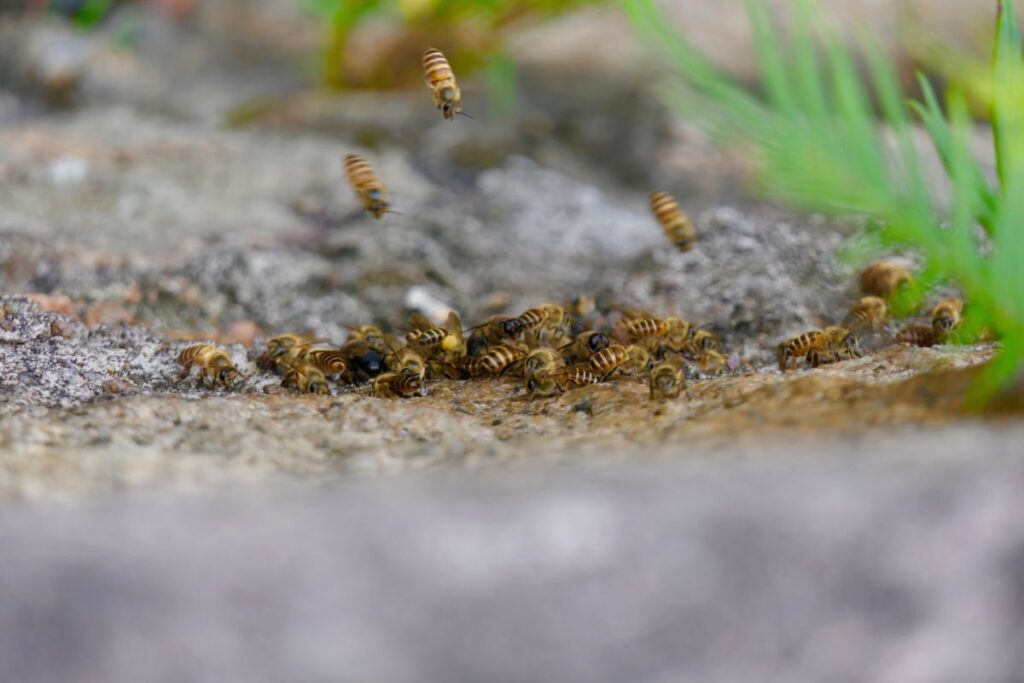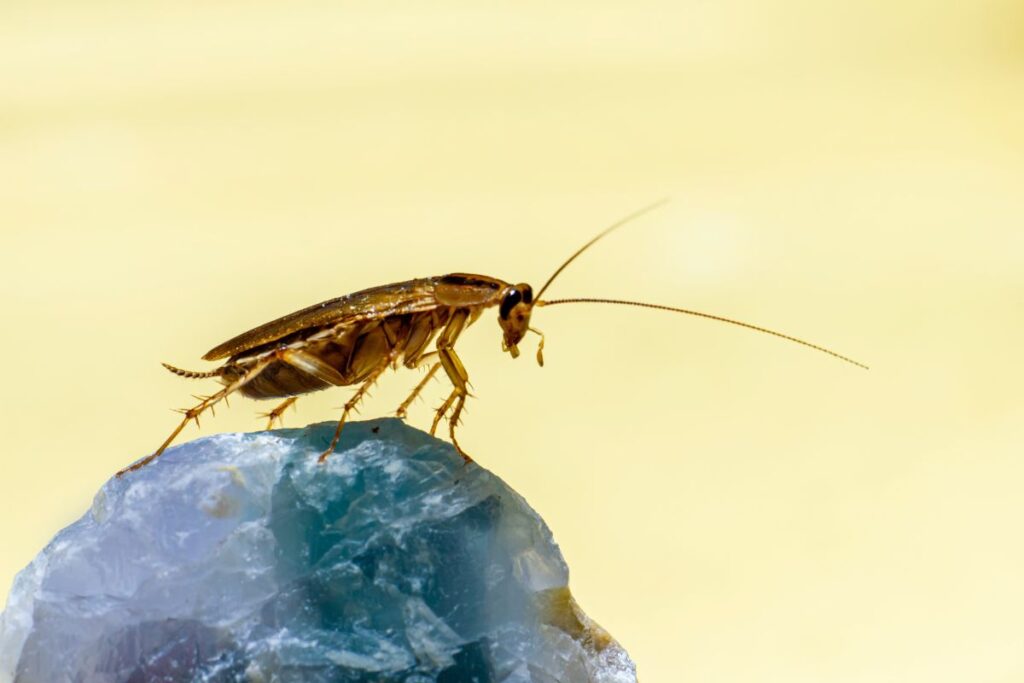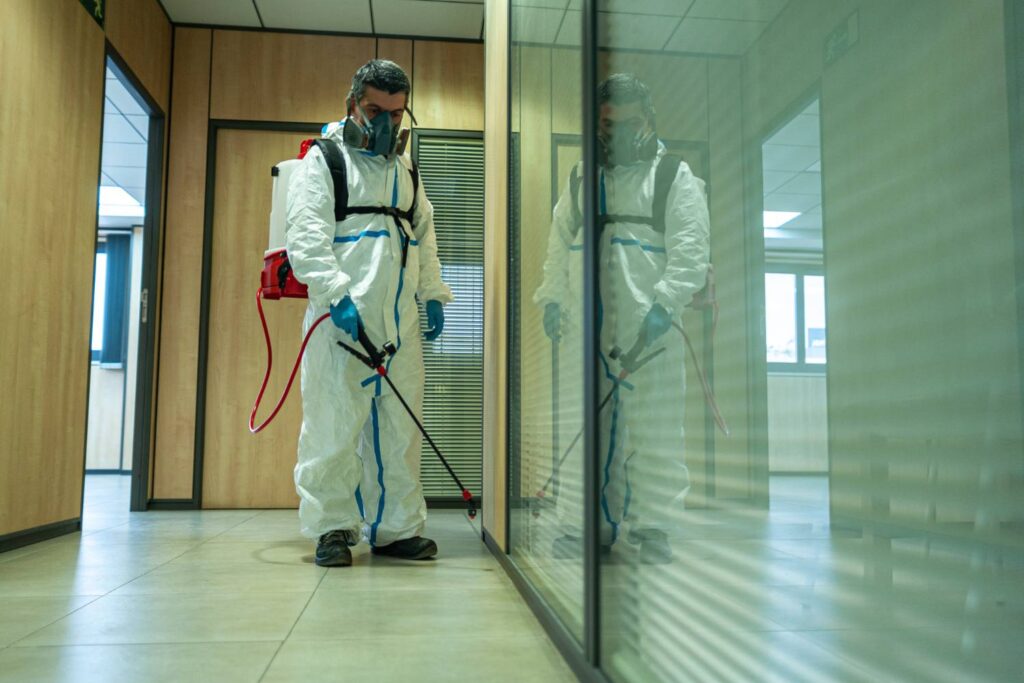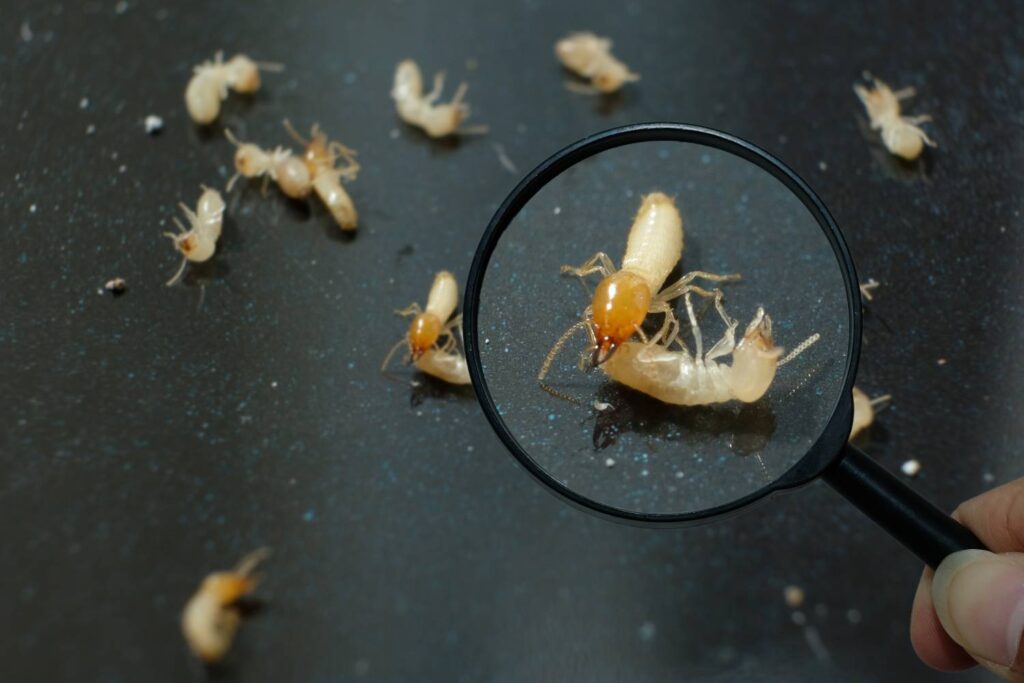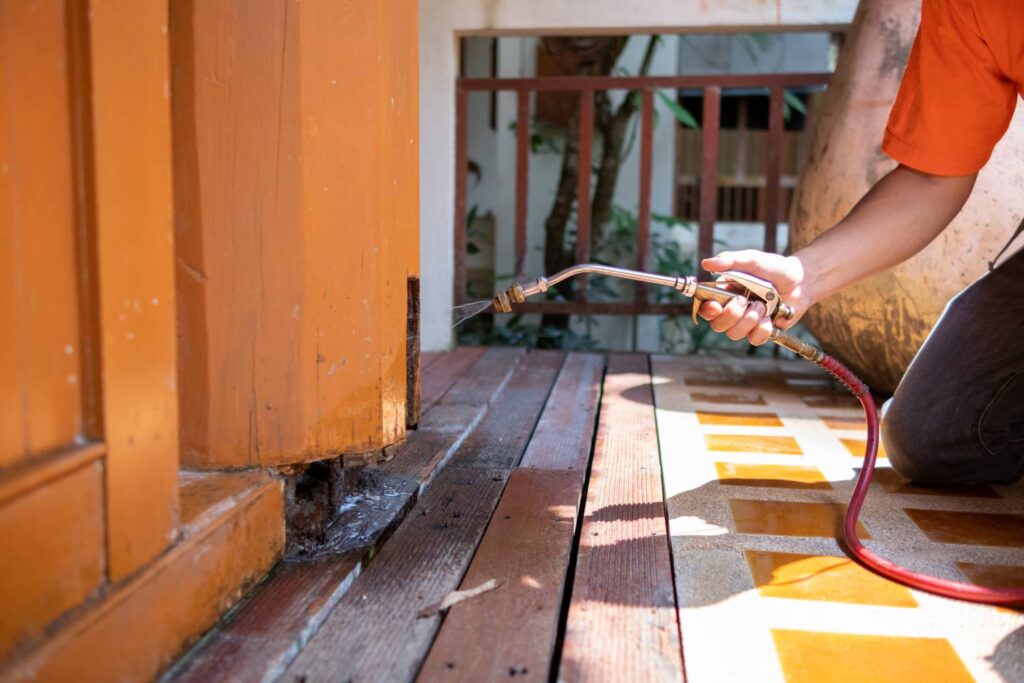The war against termites, those silent destroyers of homes, is ongoing and relentless. As homeowners grapple with the threat of infestations, fumigation emerges as a powerful weapon in the pest control arsenal.
However, the question that often arises is: Can termites survive fumigation? This blog aims to explore the effectiveness of fumigation in eradicating termite colonies, dissecting the science behind the process and examining the resilience of these wood-eating pests.
By delving into expert insights and the latest research, we'll shed light on the realities of fumigation and its role in ensuring your home remains a termite-free zone. Join us as we navigate the complexities of termite control, offering valuable knowledge and guidance to homeowners seeking peace of mind from the threat of termite damage.
The Fumigation Process
Fumigation is a pest control method that involves filling an area with gaseous pesticides, or fumigants, to suffocate or poison the pests within. It's a technique used across various settings, including buildings, soil, grain, and produce, to control pests or eliminate harmful microorganisms. The process is also crucial in importing and exporting goods to prevent the transfer of exotic organisms.
The Fumigation Process Typically Follows Several Key Phases:
- Evacuation and Sealing: Initially, humans are evacuated from the area to be fumigated, which is then sealed to create a controlled environment.
- Fumigant Release: The fumigant is released into the sealed space, allowing it to percolate through and act on any infestation present.
- Holding Period: The area remains sealed for a set period, ensuring the fumigant gas thoroughly acts on the pests.
- Ventilation: Finally, the space is ventilated, allowing the poisonous gases to escape and rendering it safe for humans to re-enter.
Types Of Fumigation
- Structural Fumigation: Targets pests within buildings, including those inhabiting the physical structure, like wood borers and dry wood termites.
- Commodity Fumigation: Conducted inside structures such as storage units to eliminate pests from physical goods, typically food products, by killing pests within the container intended to house them.
Tent Fumigation
A common method for structural fumigation, especially in residential settings, involves placing a "rubber" tent or tents made of plastic/PVC-coated canvas material over the entire house. This tenting process concentrates the poisonous gases, preventing them from escaping into the neighbourhood. It is commonly used for treating termites with sulfuryl fluoride.
Safety And Chemicals
Fumigation uses various chemicals, ideally targeting the pests without harming non-target creatures. However, due to the toxic nature of these chemicals, fumigation is conducted in the absence of humans.
Common fumigants include methyl bromide, ethylene oxide, sulfuryl fluoride, and chloropicrin, each with specific safety levels and applications. The process is hazardous, requiring operators to hold official certification and ensure post-operation ventilation to make the area safe for re-entry.
Efficacy Of Fumigation Against Termites
Fumigation, often called termite tenting, is heralded as one of the most effective methods for eradicating termite infestations, particularly those involving dry wood termites.
This process involves enveloping the affected structure in a tent and introducing a gas fumigant, such as sulfuryl fluoride, penetrating deep into wood and other materials to eliminate termites at all life stages. The efficacy of fumigation against termites is well-documented, with several key factors contributing to its success.
Comprehensive Eradication
Fumigation's primary advantage lies in its ability to provide comprehensive eradication of termite colonies. Unlike localized treatments targeting specific areas, fumigation encompasses the entire structure, ensuring no hidden colonies are left untreated. This method is particularly effective against dry wood termites, which can infest isolated areas of a home without direct ground contact.
Factors Influencing Effectiveness
The Effectiveness Of Fumigation Can Vary Based On Several Factors:
- Property Size and Complexity: Larger homes or those with complex architectures may require more time for the fumigant to circulate and penetrate all infested areas.
- Termite Species: While effective against dry wood termites, fumigation may not be the best option for subterranean termite infestations, which often require soil treatments.
- Fumigant Concentration and Exposure Time: It is crucial to eradicate all termites to achieve the right concentration of fumigant and maintain it for an adequate period.
- Longevity of Protection
- Fumigation does not provide long-term protection against future infestations. Its effectiveness is limited to eliminating current infestations within the structure. Most termite treatments, including fumigation, offer protection lasting several years. Still, the exact duration depends on factors such as environmental conditions, new termite colonies, and the home's susceptibility to infestations.
Complementary Strategies
To enhance the efficacy of fumigation and protect against future infestations, homeowners are advised to adopt complementary strategies:
- Regular Inspections: Annual termite inspections can help detect new infestations early, allowing timely intervention.
- Preventative Measures: Implementing preventative measures, such as reducing wood-to-soil contact and maintaining a dry foundation, can help deter termites.
- Integrated Pest Management (IPM): Combining fumigation with other termite control methods, such as bait systems or soil treatments, can offer more comprehensive protection.
Enhancing The Effectiveness Of Fumigation
Enhancing fumigation's effectiveness involves a comprehensive understanding of the factors that influence fumigant action and the adoption of strategies that maximize the impact on target pests while minimizing risks to humans, non-target organisms, and the environment. Drawing from a wealth of research and practical experience, several key approaches have been identified to improve fumigation outcomes.
Understanding Fumigant Dynamics
Fumigants work by penetrating pest-infested materials and killing the pests through inhalation. The effectiveness of fumigation is significantly influenced by the physical and biological characteristics of the target pests, as well as environmental conditions such as temperature, humidity, and the presence of oxygen or carbon dioxide.
Recognizing these factors is crucial for selecting the appropriate fumigant and applying it to ensure maximum penetration and pest eradication.
Optimizing Environmental Conditions
- Temperature: The efficacy of fumigants increases with temperature, as higher temperatures enhance the volatility of the fumigant and the metabolic rate of pests, making them more susceptible to the fumigant.
- Humidity: While the effect of humidity on fumigation is complex and varies with the fumigant and pest species, maintaining optimal moisture levels can facilitate the generation of fumigant gas from solid or liquid formulations and improve penetration into pest-infested materials.
- Atmosphere Composition: Adding carbon dioxide to certain fumigants can accelerate their toxic effects on pests by stimulating respiratory activity and enhancing fumigant uptake.
Sealing And Structural Integrity
Achieving a gas-tight environment is essential for fumigation's success. Proper sealing of the fumigation space prevents fumigants' escape, ensuring that they remain in contact with the pests for the required duration to achieve complete eradication. This may involve the use of specialized sealing materials and techniques to address potential leak points in the structure being fumigated.
Controlled Atmosphere Techniques
In some cases, modifying the atmosphere within the storage or fumigation space by reducing oxygen levels or increasing carbon dioxide concentrations can serve as an effective alternative or complement to traditional chemical fumigation. These controlled atmosphere techniques can be beneficial for treating commodities sensitive to chemical residues.
Integrated Pest Management (IPM)
Incorporating fumigation into a broader IPM strategy can enhance its effectiveness and sustainability. This involves combining fumigation with other pest control methods, such as biological controls, physical barriers, and sanitation practices, to manage pest populations, reduce reliance on chemical treatments, and mitigate the risk of pest resistance.
Continuous Monitoring And Adaptation
Regular monitoring of pest populations and their response to fumigation treatments is essential for adapting strategies to changing conditions and emerging challenges, such as developing resistance to certain fumigants. This may involve adjusting fumigant selection, dosage, and application techniques based on ongoing assessments of treatment efficacy.
Alternatives To Fumigation
Fumigation, while effective, is not the only method available for combating termite and bedbug infestations. Homeowners and pest control professionals have explored and implemented various non-chemical and less invasive alternatives that offer practical solutions without the extensive preparation or downtime associated with traditional fumigation. Here's an overview of some of these alternatives:
Heat Treatments
Heat treatment stands out as a prominent alternative to fumigation, particularly for dealing with dry wood termites and bedbugs. This method involves raising the temperature of the infested area to a level that is lethal to termites and bedbugs (typically between 120-130 degrees Fahrenheit) for a sufficient period, usually 1.5 hours, to ensure a complete kill. The process can be completed in as little as 8 hours and has been proven effective against termite swarms and bedbugs, targeting both the pests and their eggs.
Advantages Of Heat Treatment:
- Non-Chemical: Heat treatment does not involve using chemicals, making it safer for occupants and the environment.
- No Move-Out Required: Unlike fumigation, residents do not need to vacate the property for extended periods, reducing inconvenience.
- Effectiveness: Heat treatment can eradicate pests from the entire structure daily when applied correctly.
Considerations:
- Heat Sensitivity: Certain household items, such as electronics and furniture, may be damaged by high temperatures, requiring removal or protection.
- Energy Costs: The process can be energy-intensive, potentially making it more expensive than chemical alternatives in some cases.
Liquid Spot Treatments
Liquid spot treatments can be an effective solution for localized termite infestations. This method involves injecting termiticides directly into infested areas, such as flooring and walls, to eliminate termites at the source.
Advantages Of Spot Treatment:
- Targeted Application: Allows for direct treatment of known infestation sites.
- Cost-Effective: Generally less expensive and more convenient than whole-structure fumigation.
- Protection Against Future Swarms: Some treatments offer residual effects that help protect against future infestations.
Considerations:
- Limited Reach: May not affect termites in inaccessible areas, potentially requiring multiple treatments.
- Chemical Use: Involves the use of pesticides, which may raise health and environmental concerns.
Total Termite Protection Plan (Ttp)
Some pest control companies, like Truly Nolen, offer comprehensive termite protection plans that differ from traditional spot treatment and fumigation. These plans typically involve a combination of interior and exterior treatments designed to protect against dry wood and subterranean termites.
Advantages Of Tip:
- Comprehensive Coverage: Offers broader protection than spot treatments alone.
- Future Swarm Protection: Includes measures to guard against new infestations.
- Free Preliminary Inspections: Helps homeowners understand their risk and treatment options.
Conclusion
Fumigation is a pest control method that involves filling an area with gaseous pesticides or fumigants to suffocate or poison the pests. It is used across various settings, including buildings, soil, grain, and produce, to control pests or eliminate harmful microorganisms. The process typically follows several vital phases: evacuation and sealing, fumigant release, holding period, and ventilation. Fumigation is commonly used in residential settings, where a rubber tent is placed over the entire house to concentrate the poisonous gases.
Fumigation is effective against termites, particularly dry wood termites, as it comprehensively eradicates termite colonies. Factors influencing its effectiveness include property size and complexity, termite species, fumigant concentration and exposure time, and the duration of protection.
However, fumigation does not provide long-term protection against future infestations, and homeowners should adopt complementary strategies such as regular inspections, preventative measures, and integrated pest management (IPM) to enhance the efficacy of fumigation and protect against future infestations.
In conclusion, fumigation is a powerful tool in eradicating termite colonies and is essential for homeowners seeking peace of mind from the threat of termite damage.
Fumigation is an effective method for controlling termite and bedbug infestations. It involves understanding the factors influencing fumigant action and adopting strategies that maximize the impact on pests while minimizing risks to humans, non-target organisms, and the environment.
Understanding fumigant dynamics is crucial for selecting and applying the appropriate fumigant effectively. Optimizing environmental conditions, such as temperature, humidity, and atmospheric composition, can enhance the efficacy of fumigants. Controlled atmosphere techniques can also treat commodities sensitive to chemical residues.
Incorporating fumigation into a broader IPM strategy can reduce reliance on chemical treatments and mitigate the risk of pest resistance. Regularly monitoring pest populations and their response to fumigation treatments is essential for adapting strategies to changing conditions and emerging challenges.
Alternatives to fumigation include heat treatments, liquid spot treatments, and total termite protection plans (TTP). Heat treatment is non-chemical and noninvasive and can eradicate pests from entire structures daily. Liquid spot treatments are targeted, cost-effective, and provide protection against future swarms. Total termite protection plans offer comprehensive coverage, future swarm protection, and free preliminary inspections to help homeowners understand their risk and treatment options.
Content Summary
- The battle against termites is ongoing and relentless, posing a significant threat to homes.
- Fumigation is a powerful weapon in the pest control arsenal to combat termite infestations.
- Homeowners often question the effectiveness of fumigation in eradicating termite colonies.
- This blog explores the science behind fumigation and examines the resilience of termites.
- Expert insights and the latest research shed light on the realities of fumigation's role in termite control.
- Fumigation involves using gaseous pesticides to suffocate or poison pests within an area.
- It's used in various settings, including buildings and agricultural products, to control pests and eliminate harmful microorganisms.
- The fumigation process includes evacuation, sealing, fumigant release, holding period, and ventilation.
- Structural fumigation targets pests within buildings, while commodity fumigation focuses on eliminating pests from goods.
- Tent fumigation is a common method for treating residential termite infestations with sulfuryl fluoride.
- Fumigation uses chemicals like methyl bromide and sulfuryl fluoride, requiring careful handling and post-operation ventilation.
- Fumigation is highly effective against dry wood termites, involving enveloping the structure in a tent and introducing a gas fumigant.
- It comprehensively eradicates termite colonies, ensuring no hidden colonies are left untreated.
- The effectiveness of fumigation can vary based on property size, termite species, and fumigant concentration.
- Fumigation does not offer long-term protection against future infestations, with most treatments lasting several years.
- Homeowners are advised to adopt complementary strategies like regular inspections and preventative measures.
- Enhancing fumigation's effectiveness involves understanding fumigant dynamics and optimizing environmental conditions.
- Temperature, humidity, and atmosphere composition significantly influence the efficacy of fumigants.
- Achieving a gas-tight environment and using controlled atmosphere techniques can improve fumigation outcomes.
- Fumigation into an integrated pest management strategy can enhance its effectiveness and sustainability.
- Continuous monitoring and adaptation are essential for adjusting fumigation strategies to changing conditions.
- Alternatives to fumigation include heat treatments and liquid spot treatments, offering effective solutions without chemical use.
- Heat treatment raises the temperature of the infested area to lethal levels for termites and bedbugs.
- It is non-chemical, does not require move-out, and can eradicate pests daily.
- Liquid spot treatments involve injecting termiticides directly into infested areas for localized termite control.
- They are targeted, cost-effective, and offer protection against future swarms.
- The Total Termite Protection Plan combines interior and exterior treatments to protect against dry wood and subterranean termites.
- Comprehensive coverage and future swarm protection are key advantages of the Total Termite Protection Plan.
- Free preliminary inspections help homeowners understand their risk and treatment options.
- Fumigation's role in ensuring a termite-free home is crucial despite the availability of alternative methods.
- Understanding the fumigation process and its phases is essential for homeowners facing termite infestations.
- The choice between fumigation and alternatives depends on the specific termite problem and homeowner preferences.
- The blog provides valuable knowledge and guidance for homeowners seeking to protect their homes from termite damage.
- Expert insights into the efficacy of fumigation against termites highlight its importance in pest control.
- The complexities of termite control are navigated through a detailed examination of fumigation and its alternatives.
- Homeowners are encouraged to consider the pros and cons of fumigation and alternative methods.
- Various factors, including environmental conditions and termite species, influence fumigation effectiveness.
- Enhancing the effectiveness of fumigation involves strategic planning and adherence to safety protocols.
- Alternatives to fumigation offer less invasive solutions for termite control, with their advantages and considerations.
- Expert advice and research should inform the decision to opt for fumigation or alternative methods.
- The blog aims to demystify the fumigation process and its role in combating termite infestations.
- Homeowners seeking peace of mind from termite damage can benefit from understanding fumigation's efficacy.
- Termites' resilience to fumigation is examined, focusing on ensuring complete eradication.
- The safety and chemical aspects of fumigation are critical considerations for homeowners and pest control professionals.
- The longevity of protection offered by fumigation and the importance of complementary strategies are discussed.
- The need for continuous monitoring and adaptation in termite control strategies is emphasized.
- The exploration of fumigation alternatives provides homeowners with options for termite eradication.
- The blog serves as a comprehensive guide for homeowners navigating the challenges of termite control.
- The insights into the fumigation process and its alternatives aim to empower homeowners in their fight against termites.
- The effectiveness of fumigation against termites is affirmed, with recommendations for enhancing its impact and exploring alternatives.
Frequently Asked Questions
Fumigation is highly effective at eradicating termite colonies, including dry wood termites, by penetrating deep into the wood and other materials where termites live. It's designed to eliminate termites at all life stages, making survival unlikely when adequately conducted.
Fumigation involves enclosing the affected structure in a tent and introducing a gas fumigant, such as sulfuryl fluoride. The fumigant permeates through the structure, reaching termites in even the most hidden areas and eradicating them.
Effectiveness can vary depending on the size and complexity of the property, the termite species, and the concentration and exposure time of the fumigant. Proper preparation and execution are crucial for ensuring all termites are eradicated.
While fumigation effectively eliminates existing infestations, it does not provide long-term protection against future infestations. Homeowners should adopt preventative measures and consider regular inspections to maintain a termite-free environment.
Alternatives include heat treatments, liquid spot treatments, and the Total Termite Protection Plan, which combines various methods for comprehensive termite management. Each has its advantages and considerations, offering solutions without chemical fumigation.

